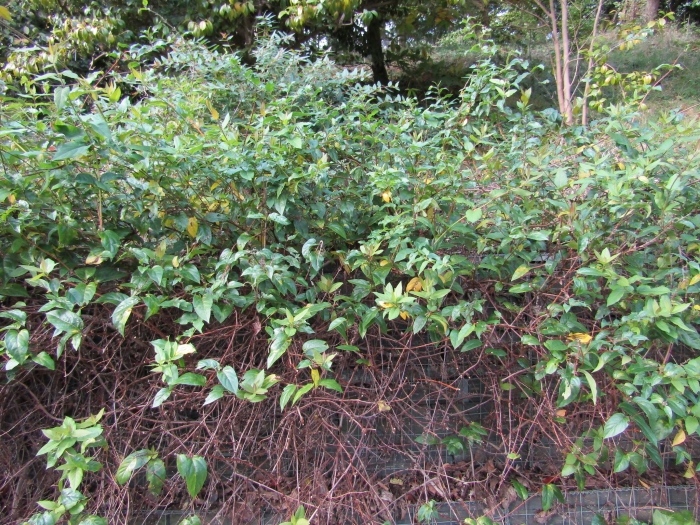Chinese Honeysuckle
(Lonicera similis)
Chinese Honeysuckle (Lonicera similis)
/
/

Leonora (Ellie) Enking
CC BY-SA 2.0
Image By:
Leonora (Ellie) Enking
Recorded By:
Copyright:
CC BY-SA 2.0
Copyright Notice:
Photo by: Leonora (Ellie) Enking | License Type: CC BY-SA 2.0 | License URL: https://creativecommons.org/licenses/by-sa/2.0/ | Uploader: wallygrom | Publisher: Flickr |


Estimated Native Range
Summary
Lonicera similis var. delavayi, commonly known as Chinese Honeysuckle, is a semi-deciduous vine native to forest margins, scrub areas, and rocky slopes in Central and Southeastern China. It can climb up to 8 meters (26 feet) in height and spread approximately 1.5 meters (4.9 feet) wide. This honeysuckle is known for its fragrant, tubular flowers that bloom in profusion, opening white and aging to yellow from late summer to autumn. The flowers are particularly showy and are followed by attractive black berries. The plant is hardy down to −15 °C (5 °F) and has been awarded the Royal Horticultural Society’s Award of Garden Merit for its ornamental qualities.
Chinese Honeysuckle is valued for its sweetly scented flowers, which can enhance the sensory appeal of a garden. It is often used to cover trellises, fences, and walls, adding vertical interest to garden designs. It thrives in full sun to part shade and requires medium amounts of water, preferring well-drained soils. While it is generally easy to maintain, it can be susceptible to powdery mildew and should be monitored for aphids. Pruning may be necessary to control its growth and maintain a tidy appearance. Gardeners should be cautious as it can become invasive if not managed properly.CC BY-SA 4.0
Chinese Honeysuckle is valued for its sweetly scented flowers, which can enhance the sensory appeal of a garden. It is often used to cover trellises, fences, and walls, adding vertical interest to garden designs. It thrives in full sun to part shade and requires medium amounts of water, preferring well-drained soils. While it is generally easy to maintain, it can be susceptible to powdery mildew and should be monitored for aphids. Pruning may be necessary to control its growth and maintain a tidy appearance. Gardeners should be cautious as it can become invasive if not managed properly.CC BY-SA 4.0
Plant Description
- Plant Type: Vine
- Height: 20-30 feet
- Width: 3-5 feet
- Growth Rate: Moderate
- Flower Color: Yellow, White
- Flowering Season: Summer, Fall
- Leaf Retention: Semi-Deciduous
Growth Requirements
- Sun: Full Sun, Part Shade
- Water: Medium
- Drainage: Medium
Common Uses
Bee Garden, Bird Garden, Butterfly Garden, Drought Tolerant, Fragrant, Hummingbird Garden, Low Maintenance, Salt Tolerant
Natural Habitat
Forest margins, scrub areas, and rocky slopes in Central and Southeastern China
Other Names
Common Names: Honeysuckle
Scientific Names: , Lonicera similis, Lonicera delavayi, Lonicera similis var. delavayi, Lonicera similis var. similis, Lonicera macrantha var. biflora, Caprifolium simile,
GBIF Accepted Name: Lonicera similis Hemsl.